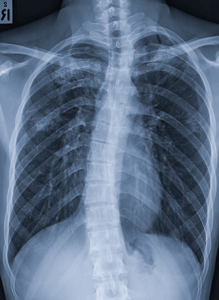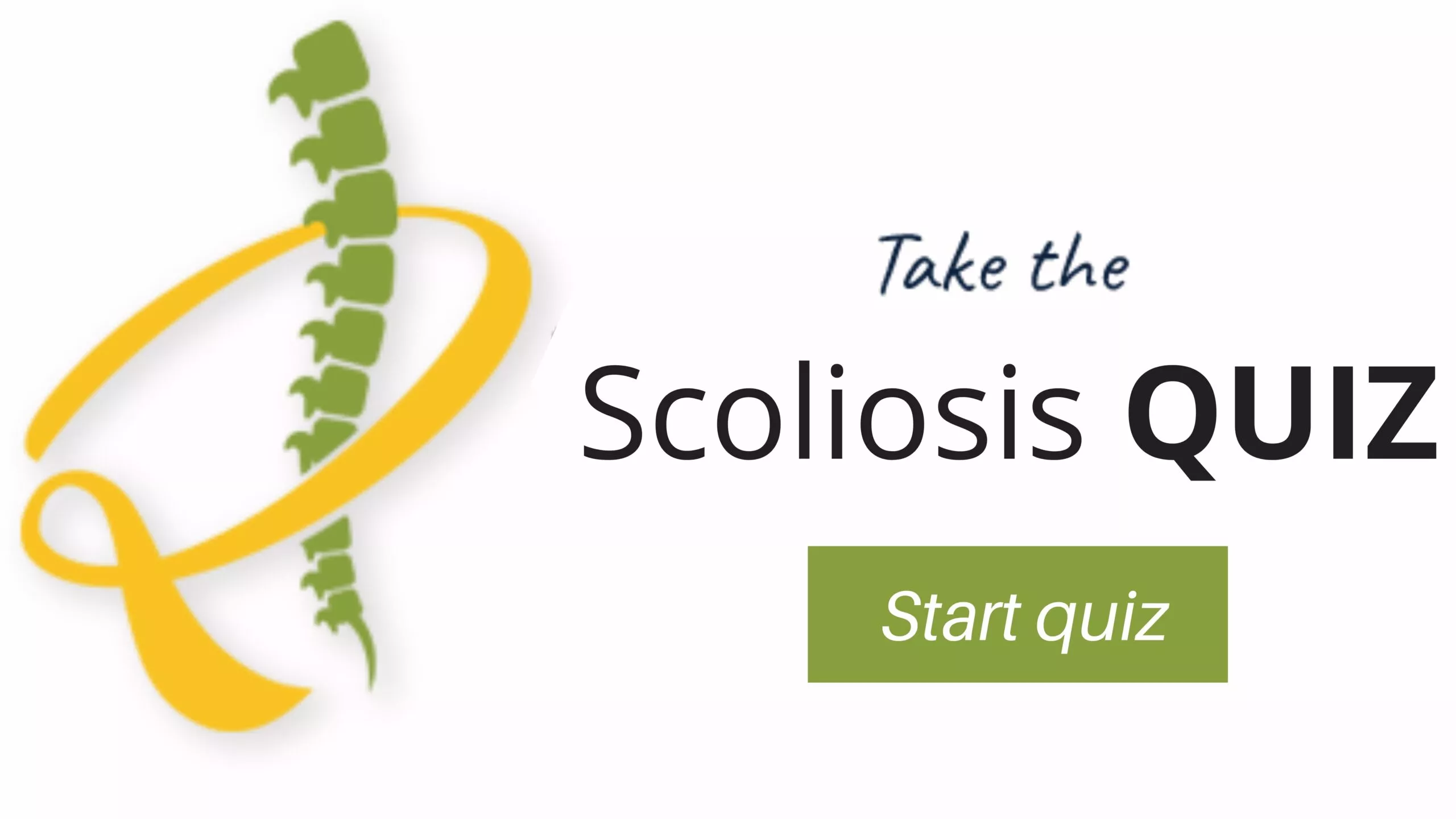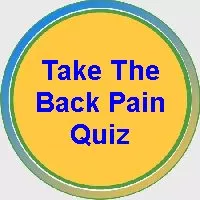A condition known as Thoracic insufficiency syndrome involves chest wall deformities and can affect normal breathing and lung growth.
Thoracic Scoliosis Defined
 Our doctors see Thoracic scoliosis in children between the ages of 10-15. Most children get this type of scoliosis when they go through their first major growth spurt. It may also develop later in life as a result of muscle or connective tissue disorders and other degenerative conditions.
Our doctors see Thoracic scoliosis in children between the ages of 10-15. Most children get this type of scoliosis when they go through their first major growth spurt. It may also develop later in life as a result of muscle or connective tissue disorders and other degenerative conditions.
Because thoracic scoliosis affects the region of the spine that connects to the rib cage, many patients first become aware of the condition because of differences in the rib cage and shoulder blades, as well as uneven shoulder height.
Thoracic scoliosis occurs with a ‘C’ shaped curve in the middle section of the spine. This area, known as the thoracic vertebrae, may develop on its own. Or it may develop with other types of scoliosis. When this happens, it typically produces an ‘S’ shape in the spine as the two curves form in different directions.
Thoracic Scoliosis Symptoms
Thoracic scoliosis is a condition characterized by an abnormal sideways curvature of the spine in the thoracic region. This curvature can cause a variety of symptoms, impacting both the spine and surrounding structures. In this article, we will focus on four common symptoms associated with thoracic scoliosis. It will cover rib pain, chest discomfort, uneven rib cage, and breathing difficulties.
Rib Pain:
Rib pain is a common symptom experienced by individuals with thoracic scoliosis. As the spine curves, it can cause the ribs to twist and become misaligned. This misalignment can lead to muscle strain, inflammation, and discomfort along the ribs. The pain may come from a specific area or spread across the affected side of the thoracic region. It can get aggravated by certain movements or prolonged sitting or standing.
Questions and Answers
What causes Thoracic Scoliosis?
Scientists do not know the exact cause of thoracic scoliosis, and therefore, it is categorized as idiopathic scoliosis. Idiopathic scoliosis occurs as a result of a combination of genetic factors and abnormal spinal growth during adolescence. Other types of scoliosis, such as congenital scoliosis or neuromuscular scoliosis, may also affect the thoracic region but doctors can identify the underlying causes.
How is Thoracic Scoliosis diagnosed
Doctors typically diagnose thoracic scoliosis through a comprehensive evaluation that includes a physical examination, medical history review, and imaging tests. The physical examination involves assessing the spinal curvature, evaluating posture, and observing any asymmetry or abnormality in the back or rib cage. Doctors use X-rays, CT scans, or MRI scans to visualize the spine and determine the severity and pattern of the curvature.
What are the treatment options for Thoracic Scoliosis
The treatment for thoracic scoliosis depends on various factors, including the severity of the curvature, the age of the individual, skeletal maturity, and associated symptoms. Treatment options may include observation, bracing, physical therapy, and in more severe cases, surgery. Doctors recommend observation for mild curves that appear unlikely to progress. Doctors use bracing for moderate curves to prevent further progression during the growth phase. Physical therapy can help improve strength, flexibility, and postural alignment. Surgeons consider surgery for severe curves or if conservative measures do not effectively manage symptoms or prevent curve progression. Doctors consider the specific treatment approach on a case-by-case basis, considering the individual’s unique circumstances.
Chest Discomfort:
Thoracic scoliosis can also result in chest discomfort. The curvature of the spine can put pressure on the chest wall, causing a feeling of tightness or pressure in the chest area. This discomfort may become worse by activities that require deep breathing like exercise or strenuous physical activity. In some cases, individuals may experience chest pain that radiates to the shoulders or upper back.
Uneven Rib Cage:
A noticeable symptom of thoracic scoliosis is an uneven rib cage. As the spine curves, the ribs on one side of the body may appear more prominent or elevated compared to the other side. This unevenness can easily been seen and individuals may notice a visible asymmetry when looking at their rib cage in the mirror. The uneven rib cage can also lead to a noticeable imbalance in shoulder height or shoulder blade prominence.
Breathing Difficulties:
Breathing difficulties can occur in individuals with severe thoracic scoliosis. As the spine curves, it can affect the position and movement of the ribs, restricting the expansion of the chest cavity. This restriction can interfere with lung capacity and ventilation, leading to shortness of breath, reduced exercise tolerance, and fatigue. Breathing difficulties occur during physical exertion or when lying flat on the back.
Conclusion:
Thoracic scoliosis can manifest with various symptoms, including rib pain, chest discomfort, uneven rib cage, and breathing difficulties. It is important to recognize and understand these symptoms to seek appropriate evaluation and treatment. If you experience any of these symptoms or suspect you may have thoracic scoliosis, it is advisable to consult with a healthcare professional like those at the Southwest Scoliosis and Spine Institute. They can conduct a thorough examination, order imaging tests, and develop a personalized treatment plan to alleviate symptoms, improve spinal alignment, and enhance your overall well-being. Early intervention and proper management can help minimize the impact of thoracic scoliosis and promote a better quality of life.
The symptoms of thoracic scoliosis differ from person to person and depend on a number of factors, such as age and stage of development of the patient, as well as the location and severity of the curve, and many more.
We’re here to help STOP THE PAIN
Call 214-556-0555 or Email Us to make an appointment with our expert scoliosis doctors.
The Causes of Thoracic Scoliosis
There is no know exact cause of thoracic scoliosis, and doctors categorize it as idiopathic scoliosis. Idiopathic scoliosis is the most common form of scoliosis, accounting for about 80% of cases. It typically develops during adolescence, particularly during the growth spurt phase. While doctors do not know the exact cause, research suggests that a combination of genetic, hormonal, and environmental factors may contribute to its development. Some potential factors that may play a role in the development of thoracic scoliosis include:
- Genetic Factors: Evidence suggests that certain genetic factors contribute to the development of idiopathic scoliosis. It tends to run in families, indicating a genetic predisposition. However, scientists continue to study specific genes and their inheritance patterns.
- Abnormal Spinal Growth: During adolescence, rapid growth occurs, and the spine may grow unevenly. This uneven growth can lead to an asymmetrical curvature of the spine, resulting in thoracic scoliosis. Doctors do not know the exact reasons for this abnormal growth, but some believe that the cause eminates from genetic and environmental factors.
- Hormonal Factors: Hormonal imbalances during adolescence, particularly in relation to growth hormones and the pubertal growth spurt, have been proposed as potential contributors to the development of scoliosis. However, scientists continue to investigate the exact role of hormones in the development of thoracic scoliosis.
It’s important to note that while the causes of idiopathic scoliosis are not completely understood, research continues to explore these factors to gain a better understanding of its origins. Other types of scoliosis, such as congenital scoliosis (caused by spinal malformations at birth) or neuromuscular scoliosis (related to underlying neuromuscular conditions), have different underlying causes.
Diagnosing Thoracic Scoliosis
Our Doctors diagnosis Thoracic Scoliosis through visual inspection and X-ray imaging. During an initial exam, the doctors at the Southwest Scoliosis and Spine Institute use our advanced low-dose X-ray imaging system to measure the curve. Further imaging tests are sometimes required for cases that may require surgery. In these cases, the doctor will order more tests, such as CT or MRI scans.
Types of Thoracic Scoliosis
Thoracic scoliosis refers to a lateral curvature of the spine that primarily affects the thoracic region, which includes the upper and middle back. There are several different types of thoracic scoliosis based on their causes and characteristics. Here are some common types:
Idiopathic Thoracic Scoliosis:
This is the most common type of scoliosis with no known cause. Idiopathic thoracic scoliosis typically develops during adolescence and may progress during growth spurts.
Congenital Thoracic Scoliosis:
Congenital scoliosis is present at birth and results from abnormal spinal development during fetal development. In the case of congenital thoracic scoliosis, there are vertebral anomalies or malformations in the thoracic spine.
Neuromuscular Thoracic Scoliosis:
This type of scoliosis is associated with neuromuscular disorders such as cerebral palsy, muscular dystrophy, or spinal muscular atrophy. The underlying muscle weakness or imbalance affects spinal alignment and leads to scoliosis.
Degenerative Thoracic Scoliosis:
Degenerative scoliosis occurs as a result of age-related changes in the spine, such as degeneration of intervertebral discs, facet joints, and spinal ligaments. It commonly affects older adults and is often accompanied by other spinal conditions like spinal stenosis.
Secondary Thoracic Scoliosis:
Secondary scoliosis refers to scoliosis that develops as a result of another underlying condition or factor. For example, scoliosis can occur due to trauma, spinal tumors, spinal infections, or previous surgeries that affect the thoracic region. For example, Thoracogenic Scoliosis is a type of scoliosis that develops as a result of a thoracic cavity abnormality.
Thoracogenic Scoliosis occurs due to changes in the shape or structure of the thoracic region, which can lead to a curvature of the spine. Thoracogenic scoliosis typically develops as a secondary consequence of conditions or factors affecting the chest cavity. Lung diseases, chest wall deformities, or surgical procedures that impact the thoracic region, such as lung resection or thoracotomy can cause the condition. An abnormality or a trauma to the chest will affect the spine and potentially lead to a lateral curvature.
Each type of thoracic scoliosis requires individualized evaluation and treatment. The treatment approach may involve observation, bracing, physical therapy, pain management, or surgical intervention. Of course, this treatment depends on the severity, progression, and underlying cause of the scoliosis. Consulting with a spine specialist is crucial to determine the most appropriate management plan for the specific type of thoracic scoliosis.
Treatment
In many cases, doctors begin by treating thoracic scoliosis through observation and a scoliosis brace. However, in cases where the patient’s curve grows to the point that they are in pain or having breathing, problems, surgery becomes the best option.
Observation
The doctors at Southwest Scoliosis and Spine Institute recommend observation for younger patients whose curves are less than 25 degrees. Using our in-house 2D/3D EOS imaging system, doctors can order images of the spine every 4 to 6 months in order to determine if the curve gets worse. The X-ray delivers an extremely low dose of radiation. This low-dose imaging system helps prevent too much radiation because children get are more susceptible to the cumulative effects of radiation than adults.
Scoliosis brace
In patients whose curve has progressed past 20-25 degrees, doctors often prescribe a scoliosis brace until the patient reaches full skeletal maturity. Though bracing cannot correct the curvature, in many cases it can stop it from growing. For this reason, bracing becomes effective when it starts early and when a brace is worn as prescribed.
Scoliosis surgery
If the curve grows beyond 40-50 degrees, the doctor may recommend surgery. Also, the most common type of surgery to address this condition uses spinal fusion, which involves placing rods and screws into the vertebrae to prevent the spinal curvature from growing any bigger.
Surgeries to fix thoracic scoliosis are complex, multi-step procedures, but Richard Hostin, MD, Devesh Ramnath, MD, Ishaq Syed, MD, Shyam Kishan, MD, and Kathryn Wiesman, MD are specially trained, and have years of experience performing these types of complex spine surgeries. With offices in Dallas, Plano, and Frisco, Texas, these spine experts have appointments within 24 hours during the work week. If you are having back pain from a spinal condition and want the very best spine specialists, please give us a call.
Footnote:
____________________
Physiopedia: Thoracic Vertebrae
If you or your loved one suffers from scoliosis, we can help. Call Southwest Scoliosis and Spine Institute at 214-556-0555 to make an appointment.


